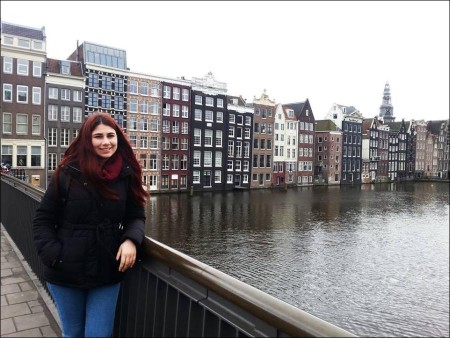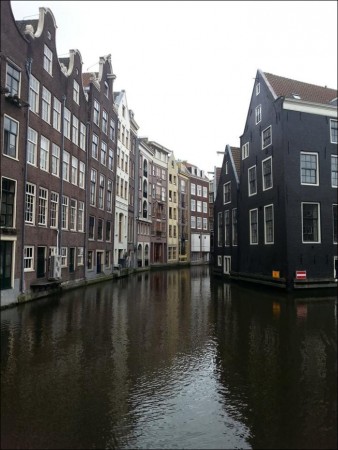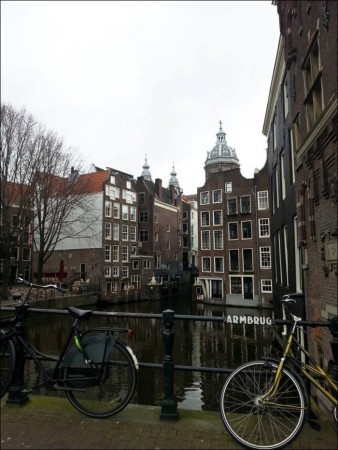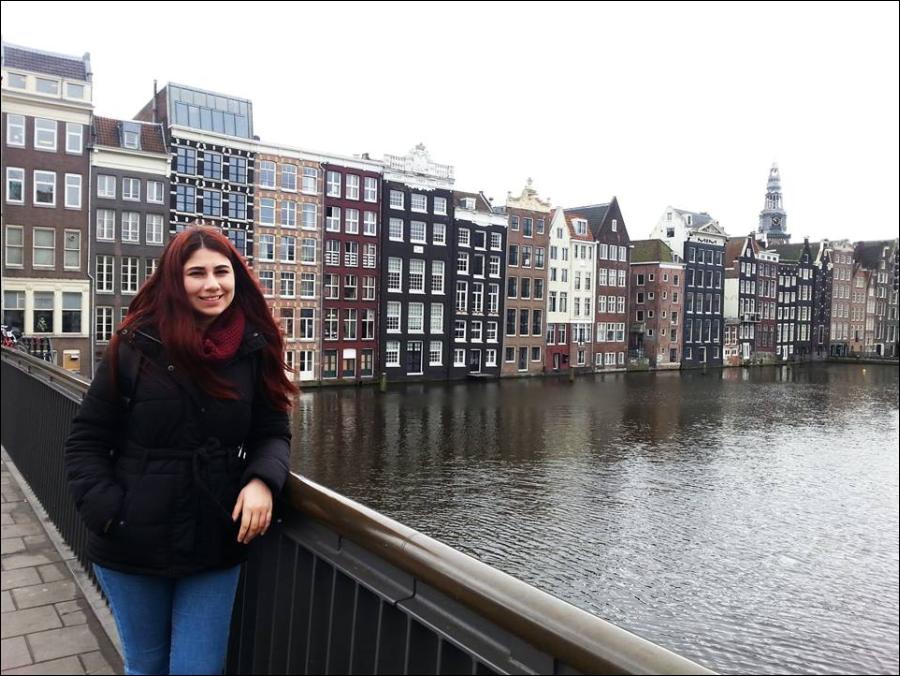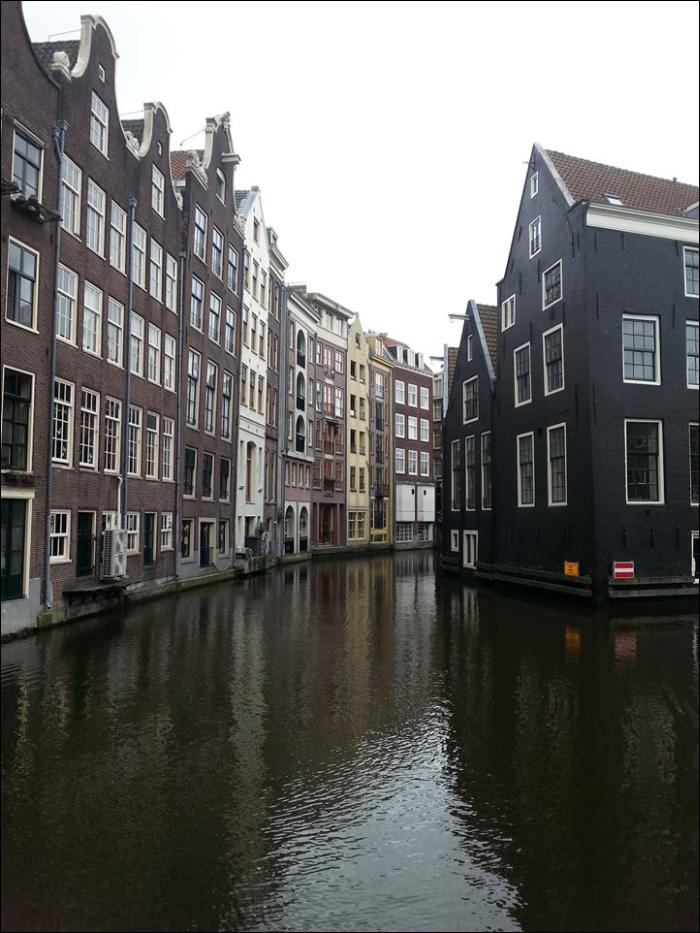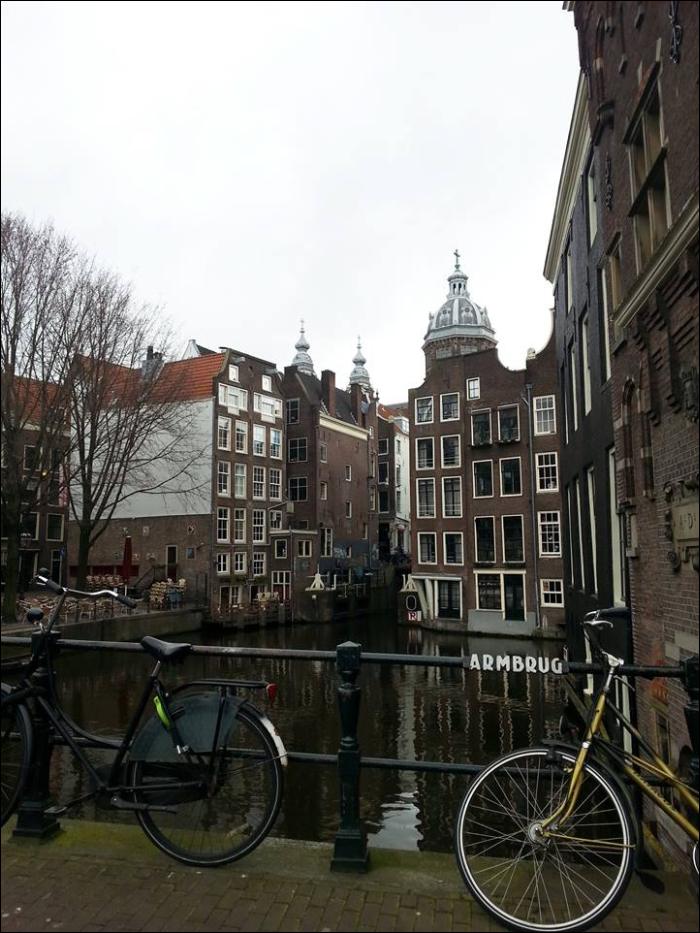Arrive in Amsterdam exhausted; leave feeling rejuvenated, and for so many reasons: a heady mix of culture and funky good times, fresh air and healthy exercise, a high-protein diet
The typical Dutch breakfast is bread with cold meats and cheese. The typical lunch is salads, sandwiches, soups in the wintertime, and coffee. Dinner means more meat and protein. (Heaven in your mouth is raw or pickled herring, which you slide down your throat and then wash down with a swig of beer or jenever–juniper-flavored 70-proof Dutch gin.) Simple, nourishing and filling meals leave you bristling with the energy to experience central Amsterdam by foot.
Your agenda dictates your pace. An enthusiastic trot will slow to a stroll along the mesmerizing canals–colorful and alive by day; just as alive, but also romantic, by night. The canals were critical to the survival and wealth of this port city centuries ago; today they distinguish it from all other cities, dividing it into 90 islands linked by picturesque bridges.
When you are not strolling along the canals, you can explore one of Amsterdam’s distinctive districts or squares, to shop, to dine, or to go club or museum hopping. In the city’s many marketplaces, your stroll might slow to a shuffle as you become reluctant to leave. You might then skip through the expensive shopping districts, for fear of losing your wallet to the exquisite diamond jewelers for whom Amsterdam is famous.
Once you are safely past the glittering stones, you may find yourself bobbing and swaying to the outdoor sounds of Amsterdam’s frenetic street life, unless you prefer neighborhoods where the mood is quiet and serene. Once again, you increase your speed, this time to a brisk strut as you pass through the red-light district. Though it’s safe here, there’s no need to look like a tourist, feeling your way around.
Rasta Baby: owned by an Amsterdamer from Surinam. When the words “coffee” and “shop” are strung together on a sign over a shop, they indicate that the establishment is a smoking cafe — one that serves pot or hash, by the gram or in prerolled joints. Coffee is available, too, but nothing stronger, as far as beverages go. Coffeeshops are mainly for tourists, who find them alluring. To Amsterdamers, they are strictly hohum.
A spiritual visit to the countryside. Windmills are worthy objects of artistic attention, as Rembrandt found. (The windmill was said to be his muse.) De Kat, the last remaining wind-powered color mill in the world, produces “antique pigments” from dyewood.
The Netherlands–a center of trade and business–is one of the most affluent nations in the Western world, and much of that wealth was built on the slave trade. The colonial power that once exploited its African and Indonesian colonies now welcomes immigrants from them. Today, 129 different nationalities live within Amsterdam’s city limits, and 1 out of 5 Amsterdamers is of other than Dutch origin. Following the independence of Surinam (formerly Dutch Guyana) in 1975, Amsterdam became home to the second-largest Surinamese community in the world. There are also large Moroccan, Indonesian and Turkish communities on the outskirts of the city.
Cafe de Kroon: spacious, elegant, trendy. You can’t do Amsterdam without visiting its cafes, but first you must be able to distinguish among the various types. “Modern cafes” and “grand cafes,” like this one–where two friends(one Curacaoan, the other Surinamese) have settled for a cool drink–have come into vogue in the past two decades.
At first, they posed a threat to the traditional “brown cafe”–a holdover from the 17th century. Fortunately, the brown cafes–cozy neighborhood bars with dark interiors of wood paneling, wood floors and wooden tables–provide a comfort and service that trendiness can’t match. And then there are avant-garde cafes, theater cafes, lefty cafes, media cafes, music cafes, film cafes, chess cafes, women-only cafes, beer cafes, karaoke cafes and gay cafes, just to name a few.
Albert Cuyp Market: Amsterdam’s largest. Trade flourishes in the cosmopolitan atmosphere of the De Pijp district. The old section of the district, built between 1860 and 1890, is more ethnically diverse than other neighborhoods: Of 40,000 inhabitants, 3,000 are Moroccans, 2,500 are Surinamese, and 1,500 are Turkish.
At the Albert Cuyp Market–colorful, lively, noisy–the fun is in the hunt, and hunt you must for the black shops: The Moroccan and Surinamese vendors struggle to hold their own against fierce competition from Dutch stallholders. But when you’re ready to quit, it’s easy to find good Surinamese (and Indonesian) restaurants in this district.
Red Light District: provocative. The square around the Oude Kerk (the oldest church in Amsterdam, built in the 14th century, and one of the most beautiful) is right next to the official prostitution district. Scantily clad women sit in the windows of 17th-century gabled houses, reading, knitting, flirting, doing their nails. Red lights flicker above their windows. At night, the underworldly maze of narrow streets, crowded bars, trendy shops and dark, smoky, dimly lit coffeeshops supports a dizzying abundance of activity.
At the Roxy: one of Amsterdam’s most famous nightclubs. Amsterdam’s world music scene has benefited from the influx of immigrants from Surinam, Turkey and other countries. Jazz is easy to find in the city, but look harder and you’ll also find hip-hop, rock, salsa, soul, ska, punk, disco, folk and more. Of course, the scene is always changing, but at last check, Margarita’s (a Latin dance club) and The Industry (a rhythm-and-blues and hip-hop club) were popular among the young sophisticated black crowd. Outside of the clubs, 14,000 concerts are held in various concert halls, museums and churches and in the open air every year.
Merciless! Bicyclers in Amsterdam will whirl you, twirl you, and knock you off balance as if you’re in slapstick comedy. Then they whir away as quickly and quietly as they came. Bicycles have been a popular mode of transportation on narrow canalside streets since the 19th century. Today, the 825,000 inhabitants of this bustling city possess more than 550,000 bicycles.
Untitled, 1961, by Samuel Middleton. Middleton, a black American painterprintmaker from New York City, has lived and worked in Amsterdam for so long (since 1962) that some consider him a Dutch painter. His works are in the eclectic collection of the Stedelijk Museum of Modern Art–the most striking modern art gallery in Europe–which contains 19th- and 20th-century classics as well as works by contemporary modern artists, photographers and printmakers. Within walking distance of the Stedelijk, in Amsterdam’s Museum Quarter, are the Rijksmuseum (National Museum) and the Vincent Van Gogh Museum. No visit to Amsterdam is complete without a stop at least one of these three famous museums.
Heineken: Here, there, everywhere. Heineken–the world’s best-known brand of Dutch beer and the second-largest brewer in the world–last year celebrated its 125th anniversary. The recipe (which owes its success to the A-yeast, a secret fermenting agent developed by a student of Louis Pasteur) and the method of brewing the beer are the same now as they were then.
The brewery is open for fascinating tours that start in the kitchen (where the beer’s basic ingredients are on display) and end in the bottling plant (where one really, really large room contains 36 hours’ worth of consumption by Amsterdamers). Presented in a fermentation-tank-cum-museum are a slide show, a film and an exhibit that describe the evolution of the machinery, bottles and other materials related to the mass production of beer by Heineken.
Related Link: Amserdam Travel Guide
Views: 299
